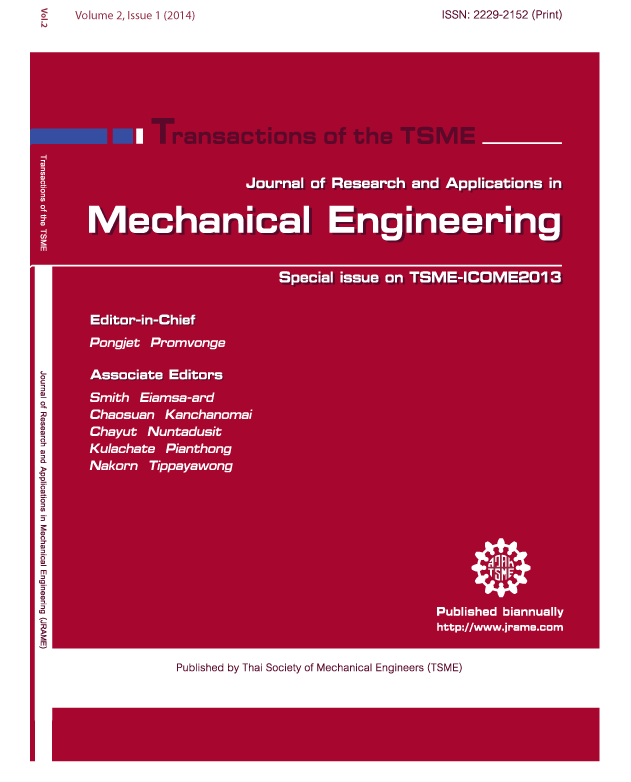Numerical investigation on flow configuration in heat exchangers with various type vortex generators
Main Article Content
Abstract
The vortex generators or turbulators such as; wing, winglet, rib, baffle, groove, etc., are used in various types of heat exchanger to improve heat transfer rate and thermal performance. The improvements of heat system are done by changing the fluid flow structure and inducing vortex flow or swirl flow over the heating system. The fin–and–tube heat exchanger is one type of heat exchanger which is used in many industries-i.e. chemical industrial, automotive, air conditioning, refrigeration, electronic equipment, etc. The vortex generators are also applied to the fin–and–tube heat exchanger due to the compact size is needed, especially for electronic equipment. The numerical investigation on flow configuration of the delta winglet vortex generators in the fin-and-oval-tube heat exchanger was reported. The vortex generators were placed on the fin surface at the trailing curve of the oval tubes with the V-tip pointing upstream called “V-upstream”. The delta winglet vortex generators can create the vortex flows and impinging flows through the heating system. These phenomena are important factors for enhancing the heat transfer rate and performance. However, the use of the vortex generators in the fin-and-oval-tube heat exchanger may lead to very enlarge pressure due to a small space between fin pitch. The vortex generators not only use in the fin-and-tube heat exchanger, but also apply in other types of heat exchanger. The numerical study of the flow topology for the discrete V-baffles in the circular tube heat exchanger was visualized. The baffles were placed on the smooth plate and inserted in the middle of the circular tube on both V-tip pointing downstream and upstream. The both cases can produce the vortex flows and impinging flows in the test section leads to increase heat transfer rates. The variation of the flow direction results in the difference of heat transfer characteristic. The understanding of the flow configuration and heat transfer characteristic when using the turbulators is a way to improve the thermal performance in the heat exchangers.
Article Details
This work is licensed under a Creative Commons Attribution-NonCommercial-ShareAlike 4.0 International License.



